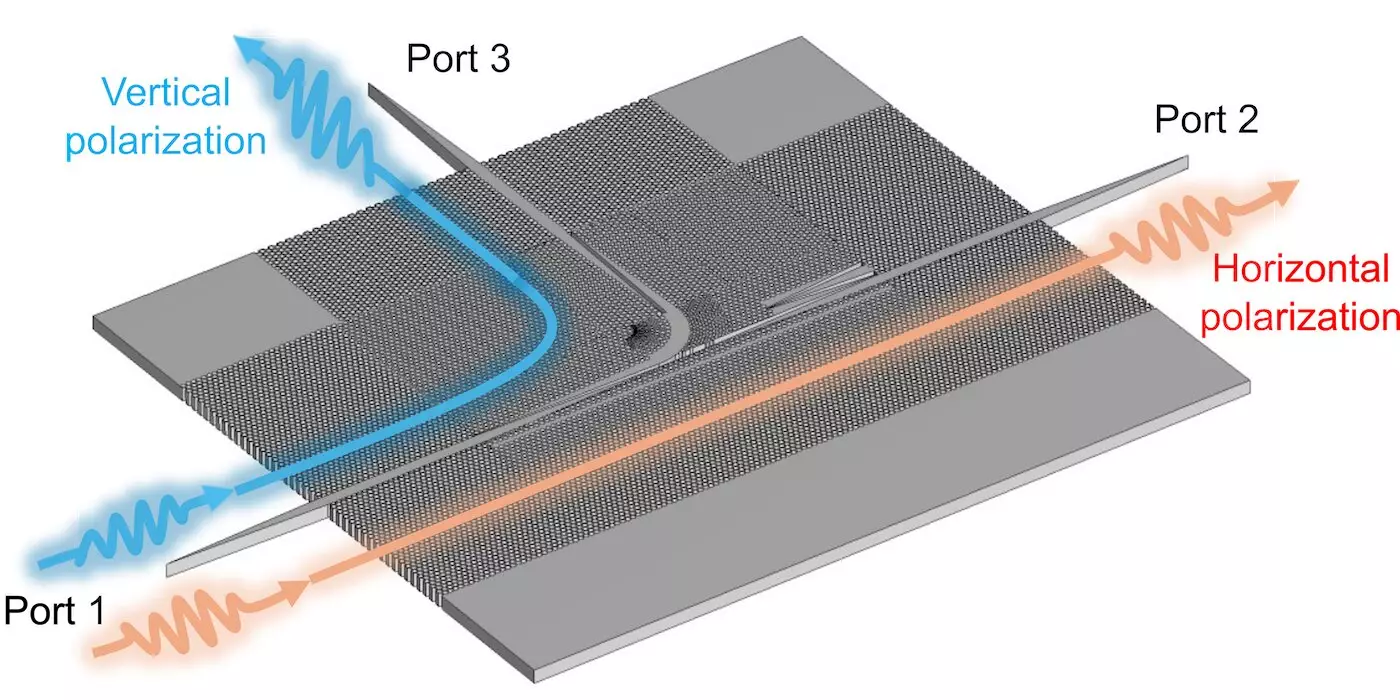In recent years, the wireless communication landscape has been rapidly evolving, culminating in the ambitious development of sixth-generation (6G) technology. Unlike its predecessors, which primarily focused on enhancing capabilities within limited spectrums, 6G strives to break through these confines, ushering in an era characterized by unprecedented data transmission rates and connectivity. A pivotal innovation in this journey is the polarization multiplexer, a sophisticated tool designed to enhance the capacity and efficiency of terahertz communications, which is considered the next great leap in wireless technology.
Terahertz communications operate within the frequency range of 0.1 to 10 THz, situated between microwave and optical waves. This unique position allows terahertz systems to harness massive bandwidth capabilities, facilitating the transmission of vast amounts of data at incredibly high speeds. For instance, current data transmission technologies struggle with bandwidth constraints, often leading to bottlenecks in data flow. By employing terahertz frequencies, engineers and scientists can anticipate revolutionizing industries reliant on rapid data exchange, including telecommunications, augmented reality, and ultra-high-definition streaming services.
A ground-breaking achievement in this domain was announced by a research team led by Professor Withawat Withayachumnankul from the University of Adelaide. Their development of an ultra-wideband integrated terahertz polarization (de)multiplexer signifies a significant milestone, having been effectively tested in the sub-terahertz J-band, specifically spanning 220–330 GHz. What sets this multiplexing technology apart is its ability to manage and manipulate the terahertz spectrum with remarkable precision while maintaining high efficiency.
One of the major advantages of this multiplexing technology is its capacity to transmit multiple data streams simultaneously across the same frequency band. As highlighted by Professor Withayachumnankul, this innovation has the potential to effectively double the data capacity, allowing for substantial improvements in communication efficiency. This capability not only breaks records for integrated multiplexers but also hints at vast possibilities if adapted to optical communication standards.
The newly developed polarization multiplexer is made using standard fabrication techniques, crucial for reducing production costs while enabling scalability. Unlike previous models that often suffered from high data loss, this new multiplexer promises significantly lower loss rates, assuring users of reliability and efficiency. Dr. Weijie Gao, a member of the research team, emphasized that the design’s accessibility and cost-effectiveness will play a crucial role in the adoption of terahertz technologies across various applications.
The ability to streamline production means that, within a few years, industries could witness robust high-speed wireless networks becoming a reality, ultimately enhancing user experiences in various fields, from mobile connectivity to telepresence.
This invention is not just a theoretical breakthrough; the research team predicts that within a short span of one to two years, broader applications and refinement of terahertz technologies will emerge. The implications of this advancement are profound. We can expect to see a surge in high-speed communication applications, with commercial prototypes surfacing in the next three to five years.
Looking ahead a decade, widespread adoption of terahertz technologies across multiple industries appears imminent. It is anticipated that sectors such as imaging, telecommunications, radar technology, and the Internet of Things will radically evolve, enhancing capabilities and services. The integration of the new polarization multiplexer with existing beamforming devices further amplifies its utility, paving the way for innovative communication functions and applications.
As this research lays the groundwork for expansive exploration into terahertz applications, it is critical for researchers, engineers, and industry stakeholders to collaborate. Together, they can harness this potential to redefine what is possible in wireless communication, cultivating a future where connectivity knows no bounds. The journey toward 6G and beyond is exhilarating, promising to transform our digital landscape fundamentally and profoundly impacting our daily lives.


Leave a Reply